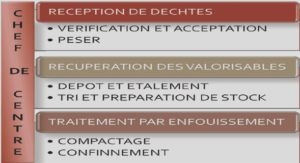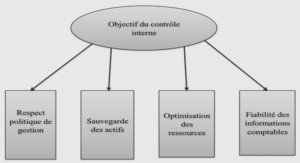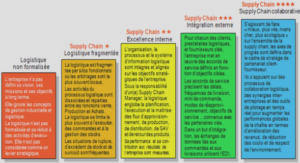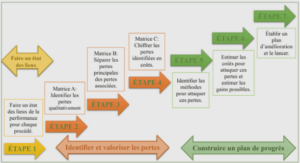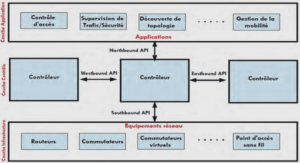Modèles d’endommagement à gradient en grandes
déformations
Damage and viscoelasticity
Energy density, rst order stability and energy balance in 3D
The three principles (irreversibility, rst order stability and energy balance) that govern the evolution law of α, and were established in I.2.1.e remain valid if any other source of dissipation is added (plasticity, temperature). The dierence lies in the total energy that now has to take into account the viscous dissipation
Rheological models and energy density
The connection between stress and strain for a viscoelastic material can be set through the use of rheological models. In the following, we will focus on the Maxwell and the PoyntingThomson model, shown respectively on Figures II.12a and II.10b. The Maxwell model is the association in series of an elastic spring and a viscous dashpot, which, in the Poynting model, is replaced by a Kelvin-Voigt element. Note that in small deformation, Zener and Poynting-Thomson have similar responses, and thus are equivalent. The energy density associated to these models is hence the sum of the elastic energy of the springs and the dissipated energy in the dashpot. The total deformation is decomposed as the sum of an elastic and an inelastic (viscous) energy. The time derivative of the viscous II.1.2.a Viscoelastic phase In what follows, the study of the homogeneous damaging states is split into two parts: the rst addresses the purely viscoelastic phase during which there is no damage occurring, while the second allows for damage to grow since the damage criterion is reached. By deriving with respect to time the expressionThis can be seen on Figure II.4 where the damage criterion is plotted with respect to time for dierent loading speed. There exists a threshold to the loading speed, dependent on the model parameters, below which the material will never suer any damage, whatever the time during which the traction is applied. The viscosity coecient η has an inuence on this threshold: if it is close to zero, the applied loading speed has to be innite so that the material can be damaged. The physical interpretation is easy: no speed deformation, as big as it could be, can damage a perfect uid. Conversely, when the viscosity of the material is large, a small deformation speed can be enough to damage it. For the Poynting-Thomson model, we have f(t) = w1 − σ(t) 2 A0 − Av0 (ε v ) 2 , (II.53) 25 Chapter II Unidimensional study of gradient damage models for viscoelastic materials Figure II.4: Maxwell model. The damage criterion tends to a nite limit when time goes to innity. If the speed loading is smaller than the threshold value (II.52), the damage criterion can never be reached. where σ(t) is given by (II.47). The fundamental dierence between the two rheological models, that is, the presence or not of a deferred elastic phase in the stress response of the material, triggers a dierent evolution of the damage criteria. In the Poynting-Thomson model, since the stress goes to innity when t → +∞ (because it is an elastic phase), we see immediately that the damage criterion (II.53) goes to −∞. Since f(0) = w1 > 0, there always exists a time te such that the damage criterion is reached, whatever the value of the loading speed. These results can also be interpreted using the properties of the models ([15] or [38]). The Maxwell model is sometimes referred to as the viscoelastic uid model, because if a constant solicitation is applied, there is no possibility of equilibrium: for an example, during a creep test when a stress is applied on a non limited time, an elastic response is observed, that keeps growing. In this way, the material whose behaviour is modelled by a Maxwell model exhibits a typical property of Newtonian uids, that is its capacity to deform indenitely under a nite stress. On the contrary, the Kelvin-Voigt model which composes the PoyntingThomson model is called viscoelastic solid, because the presence of an elastic phase in the end of a creep test makes it behaves nearly like a solid. The Poynting-Thomson model shows the same behaviour at innity, and is therefore called standard linear model or three parameters model. II.1.2.b Damaging phase Critical stress and damaging time In the case of the Maxwell model, the critical stress is σc = p w1A0. (II.54)
Damage and viscoelasticity
We can see that σc does not depend on the viscosity coecient neither on the loading speed, and is the same value as the one of a linear elastic material. The time at which damage begins is te = −τ0 ln 1 − σc ηε0 , (II.55) and in this case, it depends on all the parameters of the model. The higher the loading speed, the quickest the material begins to damage. When the material is nearly uid, te goes to innity. Since II.52 has to be respected, te is always positive. For the Poynting-Thomson model, it is more dicult to determine the critical stress because of the term in ε v in the damage criterion. Let us note p = Av0 A0 . (II.56) We write (II.42) with respect to stress, and we replace the expression of εv by ε − σ A0(1 − α) 2 in order to obtain σ as a function of α, t, and the parameters of the model σ = 1 1 + p h εAv0 (1 − α) 2 + p w1(1 − α) 3 (A0 + Av0 ) − ε 2A0Av0 (1 − α) 4 i (II.57) The critical stress is obtained with α = 0 in (II.57) σc = 1 1 + p h εeAv0 + p w1(A0 + Av0 ) − ε 2 eA0Av0 i , (II.58) where εe = teε0. Moreover, to be able to determine the time te from which the material begins to be damaged, the equality in the damage criterion (II.42) with α = 0 written in stress has to be solved, which leads to 0 = w1 − σ(te) 2 A0 − Av0 teε0 − σ(te) A0 2 (II.59) where σ(te) is the value of (II.47) for t = te. The numerical solution is plotted on Figure II.5a, where the total deformation at time te is teε0. This equation does not admit any analytical solution, therefore it is not possible to express σc with respect to the models parameters. Yet, we can still analyse some of its properties, in particular its values in the limiting cases of the loading speed. When ε0 goes to zero, the critical stress goes to Av0 /(A0 + Av0 ) and the two rigidities of the springs matter. This is not the case when ε0 goes to +∞, since σc goes to the value of the critical stress in the Maxwell case. This means that only the main spring plays a role in this value, and this can be explained by the fact that if the loading speed is large, only the instantaneous elastic response has the sucient time to intervene.
Unidimensional study of gradient damage models for viscoelastic materials
Total deformation and viscous deformation. (b) Critical stress. Figure II.5: Poynting-Thomson model. Values of the total and viscous deformation, and stress when the damage criterion is reached, with respect to the loading speed. With the assumption that εe is monotonous with respect to ε0, we can deduce that σc is also monotonous: it is consequently growing and bounded. All this can be seen on Figure II.5b. Indeed, it shows clearly that the critical stress has two phases of evolution depending on the loading speed: in the rst, it grows quickly, and can be approximated with a linear function of ε0. Using (II.49) enables us to describe the behaviour of σc for large values of te, i.e. small values of ε0. In this case, the critical stress can be approximated by the expression σc ≈ p w1A0 r p 1 + p + η (1 + p) 2 ε0. (II.60) During the second phase, the critical stress becomes constant. On Figure II.5a the evolution of the total deformation and the viscous deformation at time te is plotted with respect to the loading speed ε0: when a traction with a slow speed loading is applied, the viscous deformation is quite big, and the viscous behaviour is predominant on the elastic behaviour. On the contrary, when the loading speed is high, the material gets damaged very quickly and the elastic deformation is important. To summarize, we can again observe a dierence with the Maxwell model: in the latter, the related critical stress is constant, whereas for the Poynting-Thomson model it depends on the loading speed. We can notice that σc takes only nite values because of a natural equilibrium between the critical values: when a very quick loading speed is applied on the bar, although the critical stress should go to innity, it does not take an innite value because the damaging time te goes to zero.
Damage and viscoelasticity
Evolution law of α From now on, let us consider that the damage criterion has been reached, and let us look for the evolution law of the damage and the stress. Taking into account (II.39), the time derivative of (II.45) is σ˙ = A0 −2 ˙α(1 − α)(ε − εv) + (1 − α) 2 ( ˙ε − ε˙v) . (II.61) For the Maxwell model, the damage criterion written with respect to stress in which we inject the damage law (II.39) gives the expression of α and α˙ with respect to the stress and the model parameters. Injecting this expression in (II.61), we get the dierential equation that govern the stress during the damaging phase and the initial condition σ˙(t) = −3A0 σ(t) σc 4 3 ε˙ − σ(t) η σ(0) = σc. (II.62) Writing t˜= 3A0η 1 3 ε 4 3 0 σ 4 3 c t, and σ˜ = σ ηε0 , we get the normalized and adimensionalized dierential equation of σ˜ that governs the softening phase d˜σ dt˜ = −σ˜ 4 3 (1 − σ˜) σ˜(0) = ˜σc. (II.63) This autonomous dierential equation admits two stationary solutions, σ˜ : t˜ 7→ 0 and σ˜ : t˜ 7→ 1. For initial conditions σ˜(0) ∈]0, 1[,σ < ˜˙ 0 so the function σ˜ : t˜ 7→ σ˜(t) is strictly decreasing on [0, +∞[ and is bounded by 0. For initial conditions strictly superior to 1, the function is strictly increasing and goes to +∞. Figure II.6a shows solutions of (II.63) for dierent initial conditions in ]0, 1[. In order that the material be damaged, the material parameters have to follow the condition (II.52). This means that we always have σ˜(0) < 1, and the solution of the dierential equation can only be a decreasing function of time that goes to zero. On Figure II.6b, the stress response of a damaging viscoelastic material is plotted, for dierent values of σc. When σc is small, the time te is also small, and we see that on the value of σc depends the shape of the softening phase. When the critical stress gets close to the value ηε0, a stress plateau appears, and the closest to this value, the largest the plateau. When σc = ηε0, we go back to the purely viscoelastic solution. The Poynting-Thomson model is dealt with slightly dierently, because the dierential equation established is the one which governs the evolution of α rather than the one of σ. We introduce the notation.
I Introduction |


